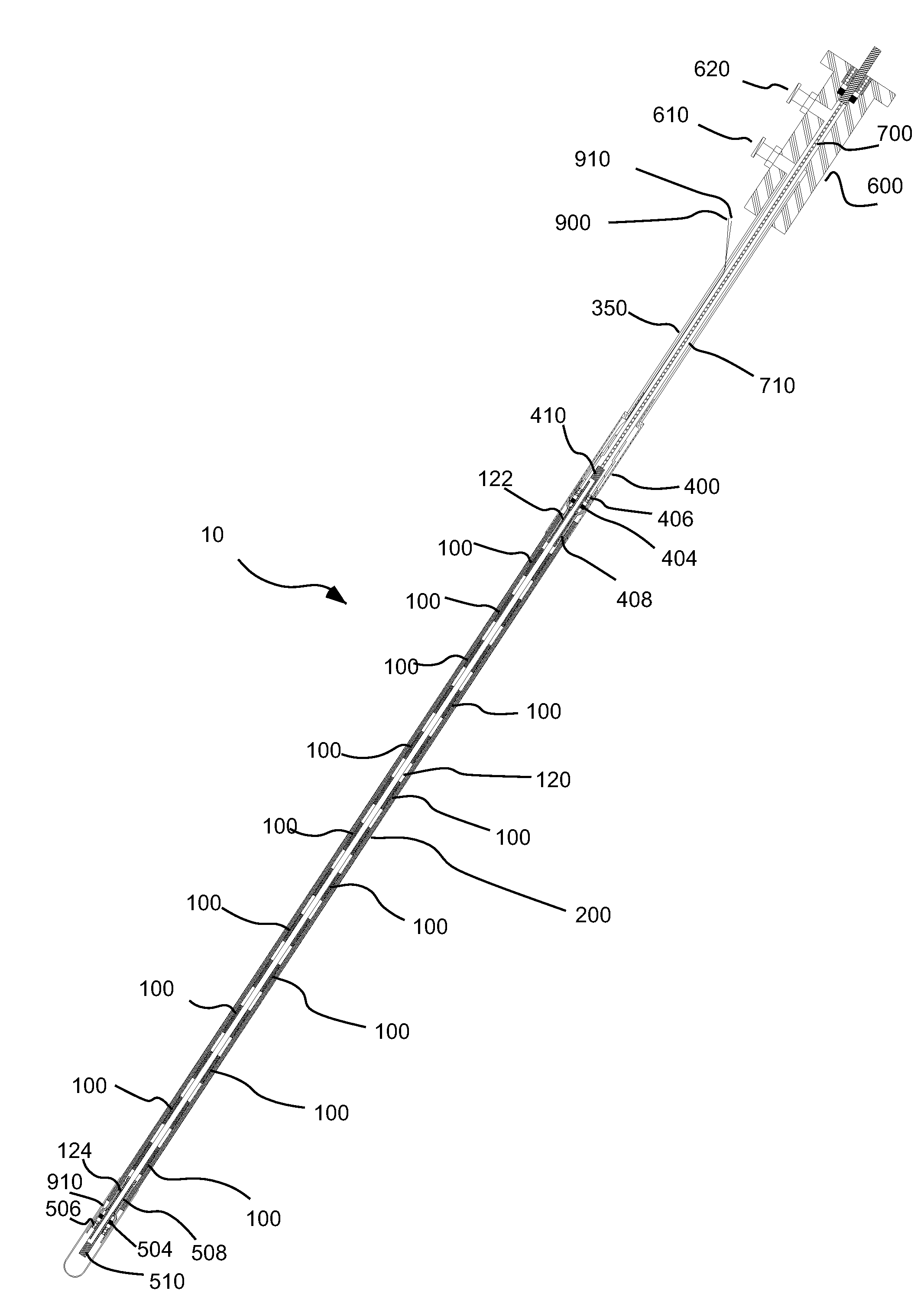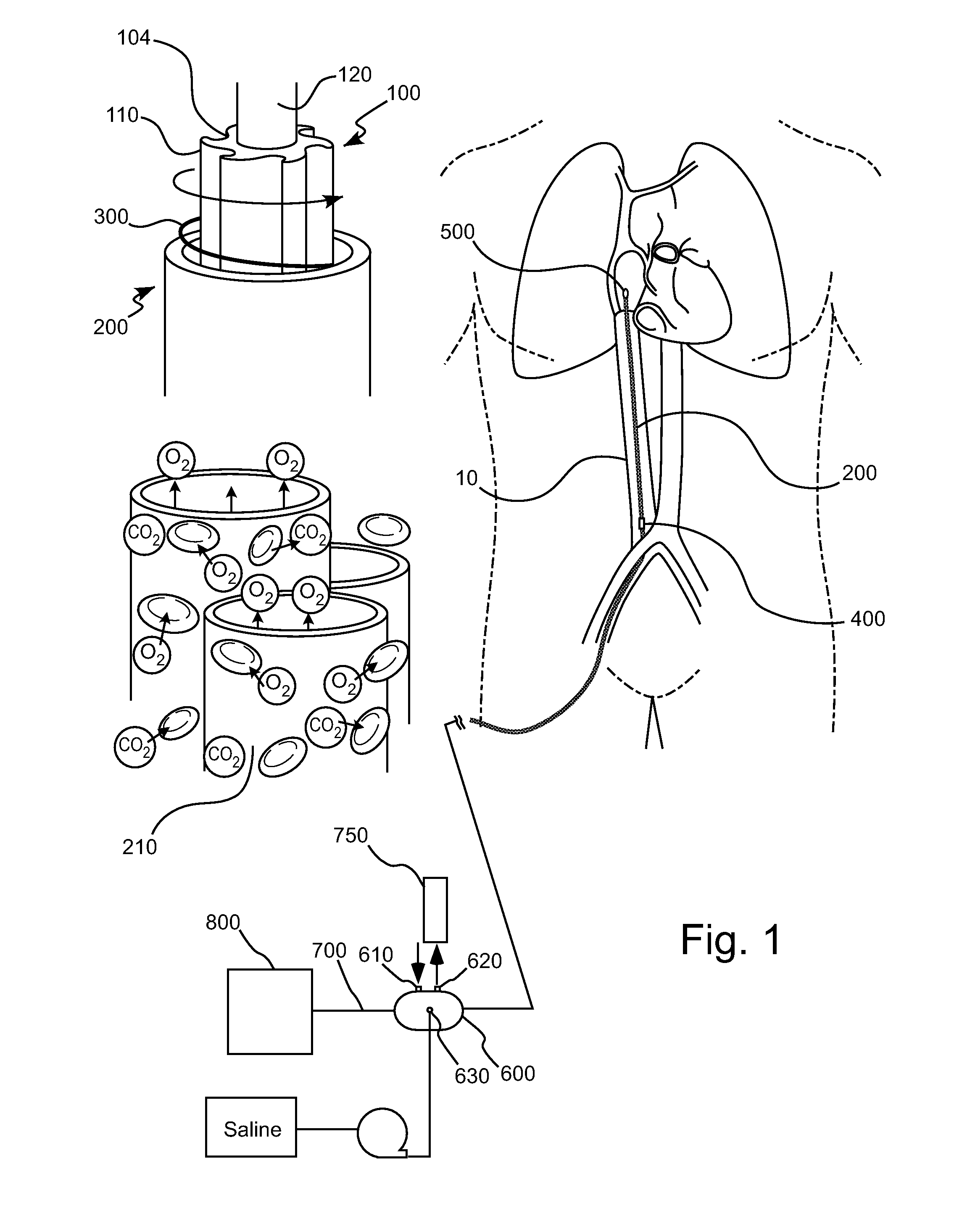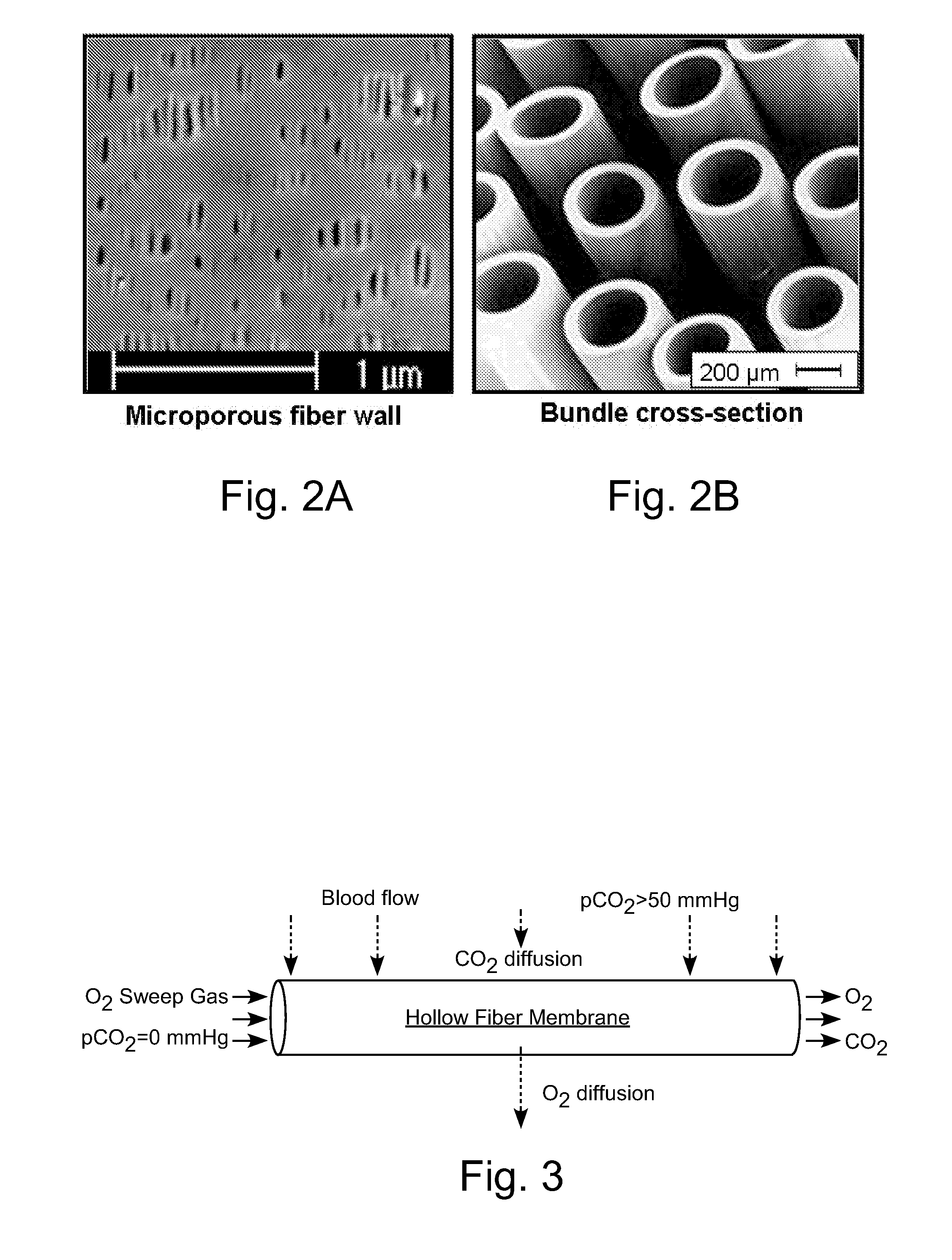Intracorporeal gas exchange devices, systems and methods
- Summary
- Abstract
- Description
- Claims
- Application Information
AI Technical Summary
Benefits of technology
Problems solved by technology
Method used
Image
Examples
Embodiment Construction
[0102]In several embodiments, the present invention provides intracorporeal respiratory assist devices that can, for example, be inserted in a percutaneous manner similar to insertion of a catheter which are operable to at least partially support native lung function in patients with, for example, acute respiratory distress syndrome and / or acute exacerbations of chronic obstructive pulmonary disease. Intravascular devices of the present invention are sometimes referred to herein as catheters. As described above, primary current clinical therapies (including pharmacotherapy, mechanical ventilation, and ECLS) are associated with patient injury and high mortality rates. The devices of the present invention can be used in combination with or as an alternative to such clinical therapies to reduce patient injury and mortality.
[0103]Although the devices, systems and methods of the present invention are discussed primarily herein in connection with oxygenation of and removal of carbon dioxi...
PUM
 Login to View More
Login to View More Abstract
Description
Claims
Application Information
 Login to View More
Login to View More - R&D
- Intellectual Property
- Life Sciences
- Materials
- Tech Scout
- Unparalleled Data Quality
- Higher Quality Content
- 60% Fewer Hallucinations
Browse by: Latest US Patents, China's latest patents, Technical Efficacy Thesaurus, Application Domain, Technology Topic, Popular Technical Reports.
© 2025 PatSnap. All rights reserved.Legal|Privacy policy|Modern Slavery Act Transparency Statement|Sitemap|About US| Contact US: help@patsnap.com



